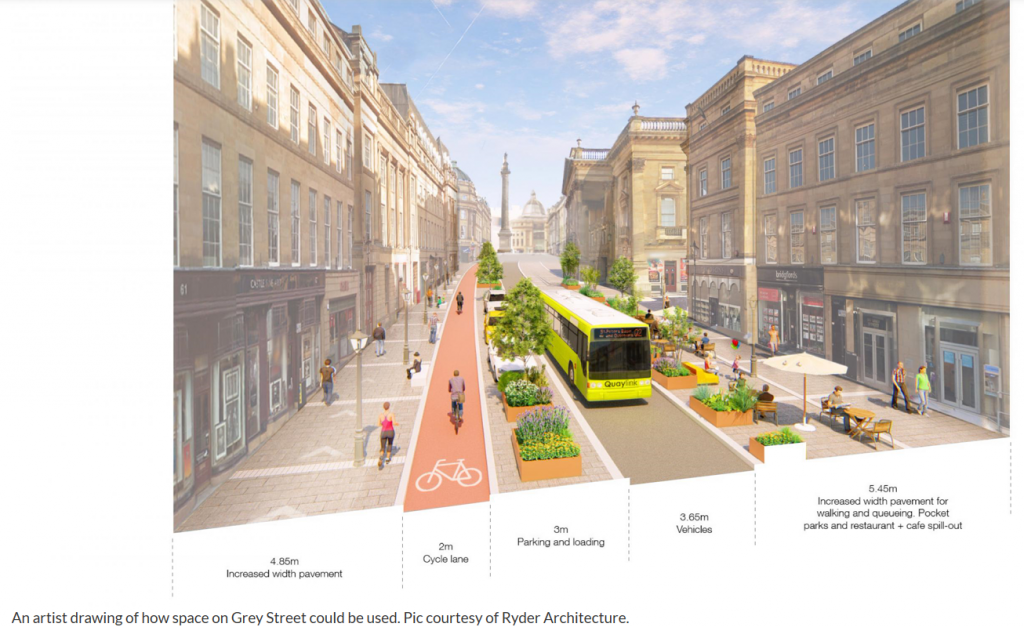About the Author

Dr Sara Walker is currently a Reader in Energy and Director of The Centre for Energy as well as Director of the National Centre for Energy Systems Integration and Deputy Director of the Supergen Energy Networks Hub in the School of Engineering at Newcastle University. Her research is on energy efficiency and renewable energy at the building scale.
Resilience and the need for Change?
The COVID pandemic has, for some sectors of UK society and business, brought into sharp relief the need for change. Resilience is today’s buzzword, along side opaque phrases such as “build back better”. How can we put some detail to the call for a “better” future? And what does this mean for the UK energy sector as we look to transform towards 2050 commitment?
Climate Change Emergency
Many are likely to be redefining their understanding of key worker as our vital infrastructure keeps the wheels of society turning. The energy sector is a critical infrastructure for the UK, confirmed by the UK Government at the height of the COVID lockdown[1]. Whilst our energy utilities focus on keeping the country supplied with electricity, gas, oil and LPG, for example, they do so in a period of uncertain customer demand, since there is no historical precedent for the extent of economic lockdown which the UK has experienced. Whilst we deal with these pressures in the short term, longer term issues of climate change and the Government target of net zero greenhouse gas emissions by 2050 cannot afford to be ignored. The Conference of the Parties 2020 in Glasgow may have been postponed for a year, but there is no pause in the evidence of climate change as May 2020 was 0.95°C above the average[2].
How to address these long term issues? To look for win-wins
with the short term COVID-recovery issue is a start. The lockdown has resulted,
across the UK, in dramatic reduction in traffic and air pollution (see, for
example, https://covid.view.urbanobservatory.ac.uk/#intro). In the mobility
space, the need for physical distancing has opened up conversations about
pavement widths, safe space for cycling and redesigning our spaces to enable
walking and cycling and to enable sufficient physical distancing.


Energy Sector Pressures
With vast numbers working and studying at home, the electricity sector has seen overall demand drop (as industrial and commercial loads reduce) but increases in use at home. At particular times during the COVID lockdown, we have had periods of relatively low demand for electricity and relatively high proportions of inflexible electricity generation (for example nuclear, wind and solar). This is an issue for supply-demand balancing for electricity in particular, since balancing is needed in order to keep the system frequency within certain quality boundaries. The UK power sector is seen as a world-leading industry, and solutions here have relevance to power systems across the globe.
Balancing is likely to be an issue moving forward with more renewable generation, and so we need to identify appropriate sources of flexibility for our energy systems.
There are two possible sources of flexibility which we would like to highlight here. Integration with the gas network, and active buildings.
System Integration and the Role of Gas and Hydrogen
The future UK energy system is of course uncertain, it is difficult to predict what it will be like in 2050. But we do know that system investment now will still be part of the 2050 operational system. So it is vital that our decisions are with 2050 in mind, rather than interim targets on the journey to net zero. Scenarios by a multitude of organisations generally see a greater role for electricity in the space heating and transport sectors, and decarbonisation of electricity through greater use of renewable energy technologies.
One way to address the issue of balancing for the electricity sector, in this future of greater demand and greater use of renewables, is to better integrate electricity and gas. This would then enable the two energy vectors to mutually support one another in times of stress. In particular, there are options to enable the generation of hydrogen using electricity at time of excess generation compared with demand. This hydrogen can then be stored in the gas network, which could be hydrogen ready by 2030[3]. Hydrogen is of significant interest for the UK Government for applications in industry, in transport (particularly marine, long distance and heavy road, air and rail transport).
Repurposing of the existing natural gas network has benefit of reduced stranded assets, and substitution of hydrogen into the gas system at mixes of up to 20% can enable the UK to begin the demonstration phase prior to full scale roll out of a hydrogen system.
InTEGReL
is a new integrated energy test and demonstration facility in Gateshead, north
east England. Led by Northern Gas Networks and in partnership with Northern
Powergrid and Newcastle University, the facility is a second phase demonstrator
for the HyDeploy project, to test the blend of hydrogen in natural gas networks
for a range of customers and networks.
Flexibility in Demand – The Role of Active Buildings
10% of UK households (2018 figure) are classed as being in fuel poverty, although up to date figures are unavailable. Longer term impacts to incomes of households during an economic downturn, and increased energy use by households, are likely to push numbers of fuel poor upwards. The UK faces a significant risk, as we move towards colder winter months, of a growth in cold-related illness and excess winter deaths at the same time as our NHS struggles to recover from COVID.
A win-win is to address the poor housing stock in the UK. A retrofit stimulus aimed at the construction sector has a significant advantage in terms of job creation. Furthermore, these are local jobs, contributing to the Government’s ambition to “level-up” the regions and nations of the UK. Retrofit investment has the potential to move households out of fuel poverty. Energy efficiency has been highlighted by a number of organisations as a vital element of a green economic recovery for the UK[4] [5]. By improving our housing stock in a way which enables the building to play an active role on energy networks, the buildings can also provide flexibility to those networks. This might involve using more energy at times when it is abundant and cheap, charging up electric vehicles and filling heat and electrical storage in the home. It might also involve demand reduction at times of network stress and demand peak. So this might involve using local generation, home energy storage, and turning down or off certain loads (such as heat pumps).
Conclusion
The case for change in our energy sector was powerful pre-Covid, it is even more so today. In light of the Government’s own 2050 target, we must not lose this catalytic moment to take action. There is much to do, and taking urgent action trumps more debate and prevarication. The energy transition is no longer an aspiration, it is an imperative.
The full article is available to view.
[1] https://www.gov.uk/government/publications/coronavirus-covid-19-maintaining-educational-provision/guidance-for-schools-colleges-and-local-authorities-on-maintaining-educational-provision
[2] https://www.ncei.noaa.gov/news/global-climate-202005
[3] Iron Mains Replacement Programme is replacing gas mains iron pipework with polyethylene pipes, which can be used with hydrogen.
[4] https://www.mckinsey.com/business-functions/sustainability/our-insights/how-a-post-pandemic-stimulus-can-both-create-jobs-and-help-the-climate#
[5] https://www.ippr.org/research/publications/faster-further-fairer